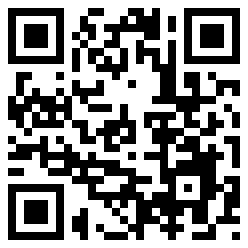
Years ago, I sat on a media panel in Pittsburgh and the topic of websites came up. This was about the time when websites were just beginning, and I just scoffed at it and viewed it as an egotistical concept for organizations. Look how that turned out!
It seems like every decade, there’s been some type of wonderful technology that comes around. I’m old enough to remember the fax machine, and was amazed that we could insert paper with words on it into this machine and transmit it to someone else. Going back years further, I can still remember turning the handle of a mimeograph machine, and then all of a sudden they created a button that would make it go by itself.
I can remember how advanced the telephone became with features like call waiting which was a phenomenon in its day. Then touch tone phones became the next big thing. I also remember all of the different phases of pagers, beepers, and the many reiterations of cell phones. I remember when I first got a computer with a modem. I can still recall the days of being on the phone with AOL until 2am just trying to figure how to get this new online technology to work.
For most of these technological advances, I have always been behind the curve. I felt that I never needed it because it was a luxury or a novelty. So I didn’t pay much attention to it, until everyone was using it. Then I had to jump onboard, but I was already behind the times.
I didn’t want to get behind the times with social media and so I embraced it and I’m trying to encourage others to get onboard too, before it’s too late. Today, I often chat with people on a daily basis who claim they are all about social media, but when I check their social media account, whether it’s LinkedIn or Twitter, they may have about a dozen connections. Their response is usually the same–they check their social media channels only when they are notified by email that someone connected with them. It’s great to see that some of the people I come into contact with say that their companies are using social media, but they’ve reactive instead of being proactive, and it slows down their progress. In many instances, the same people who are holding back are those who were slow to adopt websites.
As I have mentioned before, social media has changed our brand. Some of you may slough it off and say that’s because we’re a media organization and that it won’t work for their particular industry. Social media is here to stay and it can make an impact on your brand no matter what industry you are in. With social media, you now have better and direct contact with your customers and prospects. Your audience is already on social media–shouldn’t you be where the party is? I can tell you with certainty that if you’re not in the social media sphere and you’re not active, then your competition surely is. They’re the ones who are making their brand more exposed to the very same audience you are trying to reach.
I read last week that your car radio is being revolutionized. Pandora is expected to a be a feature on your car radio. With satellite radio already popular among car buyers, and with Internet radio on the horizon, what are FM and AM stations going to do?
This same article I read stated that ”for the first time, more people are getting their news from the web than newspapers. The Internet only trails television among American adults as a destination for news.” Forty-one percent of the people in the study cited that the Internet is where they get most of their news about national and international news. This is up 20% from the previous year. The article then cited these stats about how people got their news:
- Cable TV viewership was down 13% in 2010
- Magazine readership, down 9%
- Audio, down 6%
- Newspapers, down 5%
- Network TV, down 3.4%
- Local TV, down nearly 2 %
Online platforms are gaining ground, while other sectors are losing. It goes back to my point that your audience is turning to the web for their news and information. If your audience is already turning to the Internet or mobile devices for news, they’re also researching brands and companies they want to do business with. Google has become like the Yellow Pages. If you need a painter, a landscaper, a real estate agent, most likely you’ll turn to Google or another search engine to research those services in your area. If you’re invisible on the web, your company won’t turn up in the search results. By being active on social media and by having an interactive website, you can become more visible, so your prospective customer can find you.
For 24 years, my business served our advertisers with a monthly newspaper and all we can offer them is “mac and cheese.” A monthly ad is all I could offer for them to reach their audience and then later I was able to offer a banner ad on the site. I remember getting excited when I could tell someone our website had 30 hits in one day. Now we have a whole menu of options and able to reach a much wider audience. Our advertisers can now leverage our expansive platform, whether it’s through a print ad, an online directory, Featured Thought Leader articles, email distribution, or social media connections, to reach over 50,000 connections combined.
Your audience reacts to new technology pretty quick. They won’t wait for you. If you sit back and wait to see what your competition does, your audience, unbeknownst to you, are off and running already.
Let’s hear from you. Has your organization embraced social media yet? And for those of you who have embraced it, share your success stories. If they haven’t, what’s holding them back? Email me at [email protected].
Throughout the year, our writers feature fresh, in-depth, and relevant information for our audience of 40,000+ healthcare leaders and professionals. As a healthcare business publication, we cover and cherish our relationship with the entire health care industry including administrators, nurses, physicians, physical therapists, pharmacists, and more. We cover a broad spectrum from hospitals to medical offices to outpatient services to eye surgery centers to university settings. We focus on rehabilitation, nursing homes, home care, hospice as well as men’s health, women’s heath, and pediatrics.








